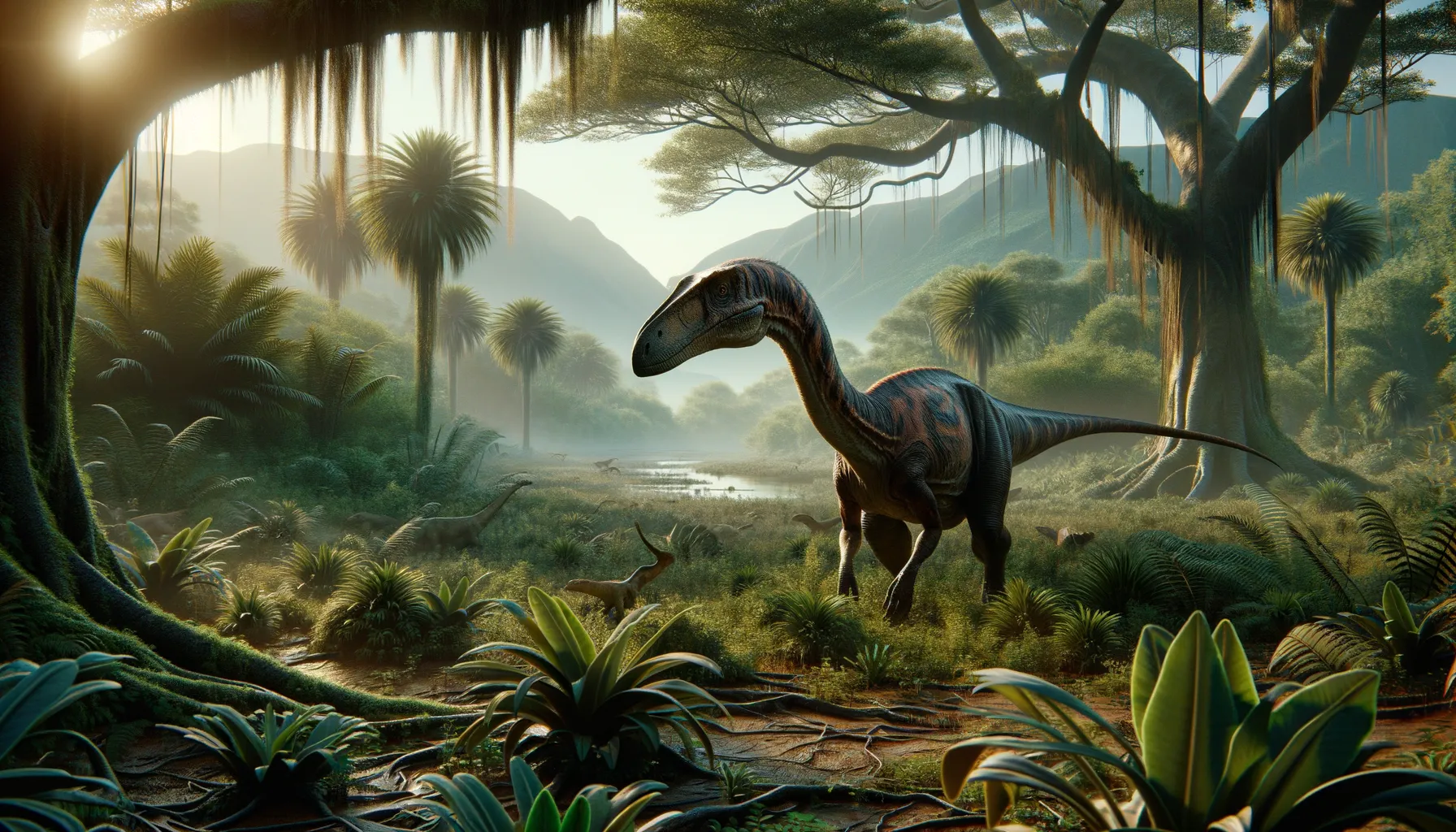
Xuwulong
Discover the duck-billed wonder!
Period
Cretaceous
Length
About 5 meters long.
Height
Roughly 1.5 meters tall.
Weight
Approximately 250-300 kg.
Xuwulong was a medium-sized dinosaur that lived during the Late Cretaceous period. Its fossils were first found in China, and it is recognized for its unique, duck-bill-like snout. As a herbivore, it roamed ancient landscapes, feeding on plants and leaves. Its discovery provided new insights into the diversity of dinosaur species in Asia and helped scientists understand more about their evolution and adaptation strategies.
Diet
Xuwulong was a herbivorous dinosaur, meaning it ate plants. It likely fed on a variety of vegetation available during the Late Cretaceous period, including leaves, ferns, and possibly seeds.
Hunting
As a herbivore, Xuwulong did not hunt other animals. Instead, it may have spent much of its time foraging for plant matter. Its elongated snout was well-suited for reaching and plucking vegetation.
Environmental challenges
Xuwulong faced challenges such as fluctuations in climate, which affected plant availability. Predators posed another threat, requiring Xuwulong to rely on its agility and the protection of its herd. Additionally, natural disasters like floods could have altered its habitat and food sources, impacting its survival.
Speed
Moderate, likely around 15-20 km/h.
Lifespan
Estimated to be around 20 to 30 years.
First discovery
Discovered in the Gansu Province, China in 2011.
Fun Facts
- Xuwulong was named after Xu Yu, a famous Chinese paleontologist who made significant contributions to the field.
- This dinosaur lived during the Early Cretaceous period, which was about 120 million years ago.
- Xuwulong is part of the Hadrosauroidea group, often known for their duck-billed snouts.
- Fossils of Xuwulong were discovered in the Yujingzi Basin of Gansu Province, China.
- Despite its large size, Xuwulong was a herbivore, meaning it primarily ate plants.
- Xuwulong's fossils have provided crucial insights into the diversity of early duck-billed dinosaurs.
- The name 'Xuwulong' means 'Xu's dragon' in Chinese.
Growth and Development
Xuwulong likely hatched from eggs, with juveniles growing rapidly in the first few years. Growth rates may have slowed as it reached maturity, balancing energy use between maintenance and further development. Fossil evidence suggests it grew in stages, with bone growth rings indicating periods of faster and slower growth.
Habitat
Xuwulong inhabited areas characterized by lush vegetation, such as floodplains and forests. These environments provided abundant food sources and cover from predators. Water sources like rivers or lakes were likely nearby, essential for drinking and sustaining plant life.
Interaction with other species
Xuwulong likely coexisted with a variety of other dinosaurs and smaller animals. It might have moved in herds for protection against predators. Symbiotic relationships with certain plant species were possible, aiding in seed dispersal through its feeding habits.
Natural lifespan
Xuwulong's natural lifespan was likely 20 to 30 years.
Reproduction
Xuwulong likely laid eggs in nests, with some level of parental care for the young. Fossil evidence indicates communal nesting sites, where multiple individuals laid eggs together. The survival of juveniles likely depended significantly on group protection strategies.
Social behaviour
Xuwulong may have been social, living in groups to ward off predators. Group living also facilitated finding food over large areas. Communication among individuals could have included vocalizations or visual signals to maintain group cohesion.
Fossil locations
Fossils were primarily located in the Gansu Province of China. This discovery added to the understanding of dinosaur distribution across Asia. The fossils included well-preserved skulls and postcranial bones, offering detailed data for analysis.
